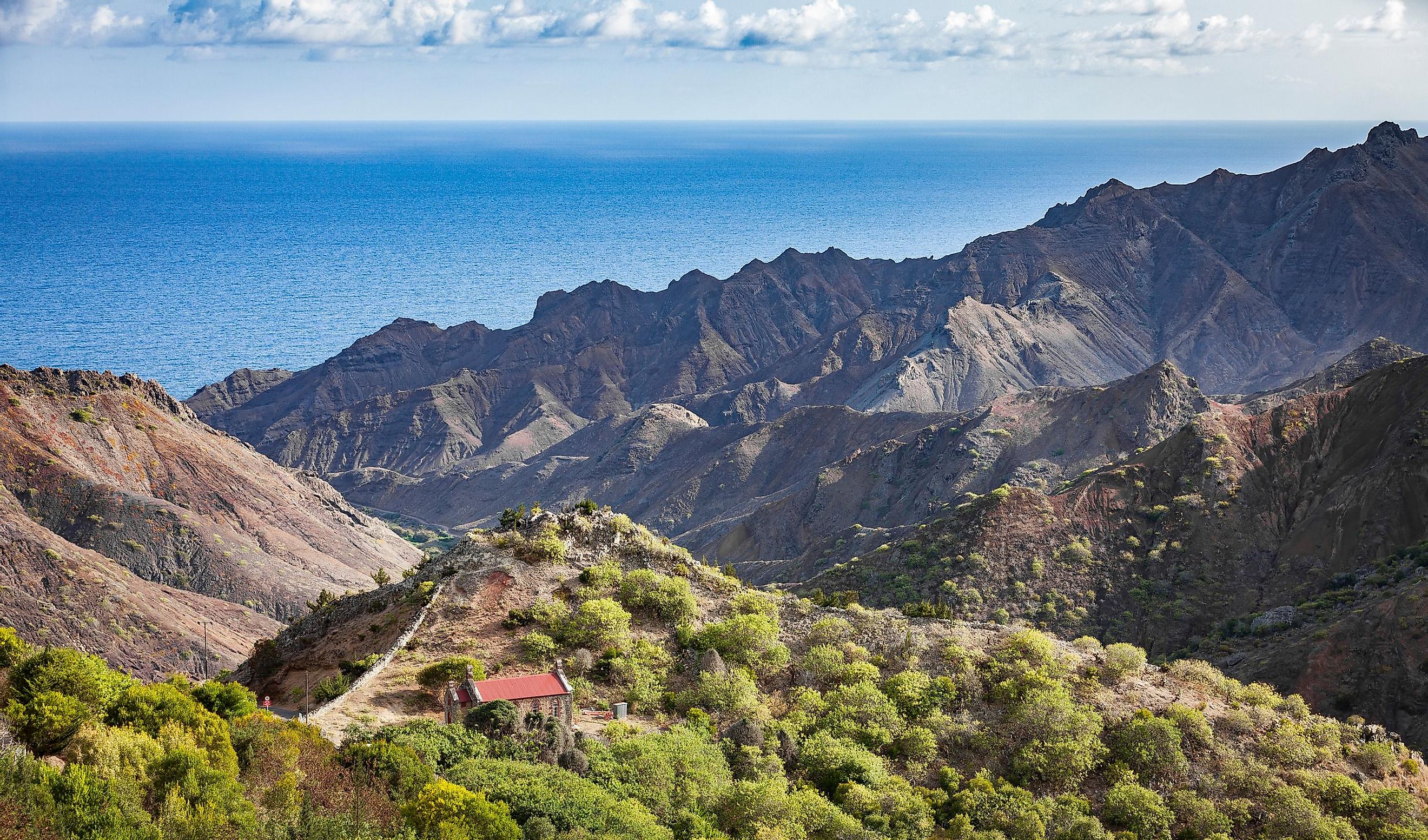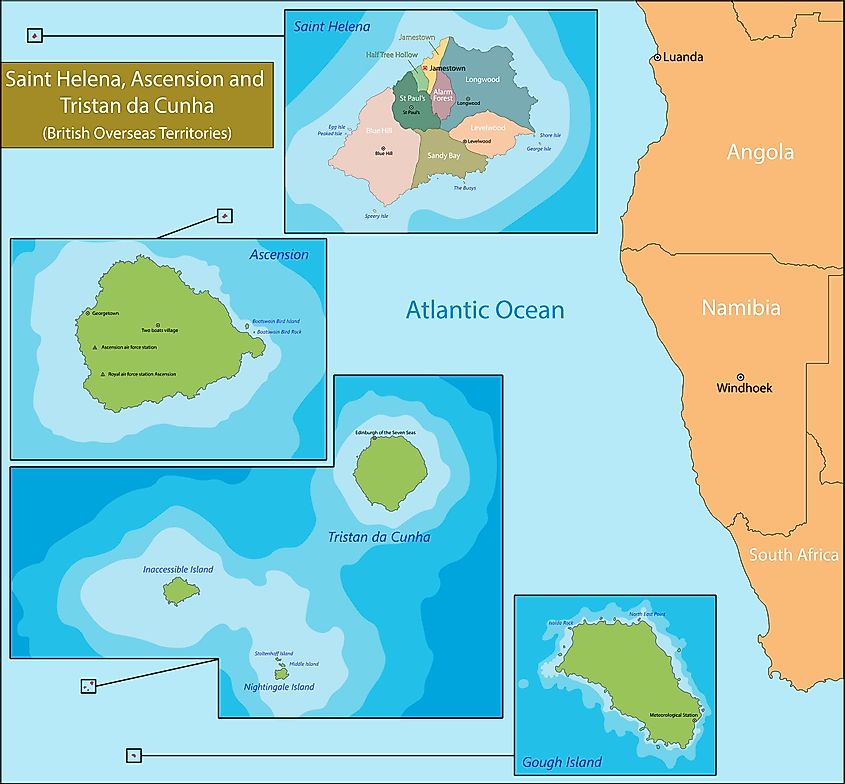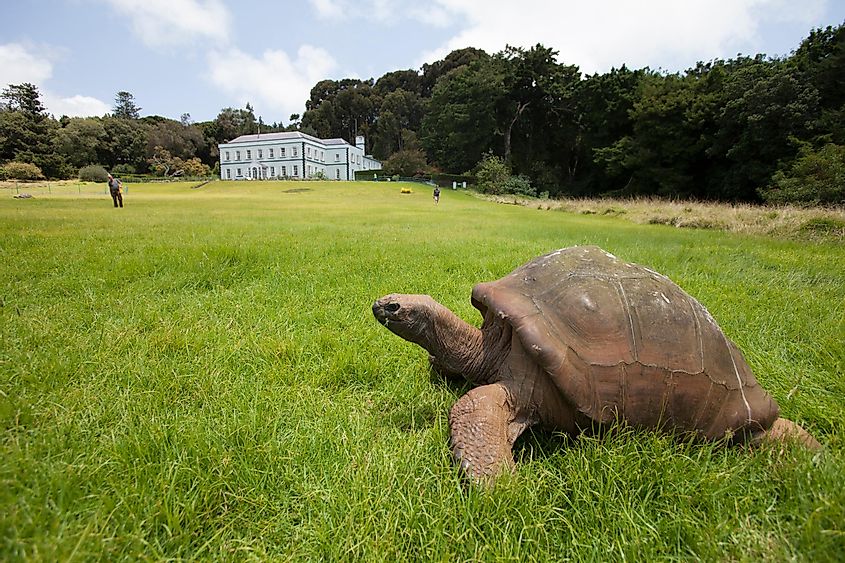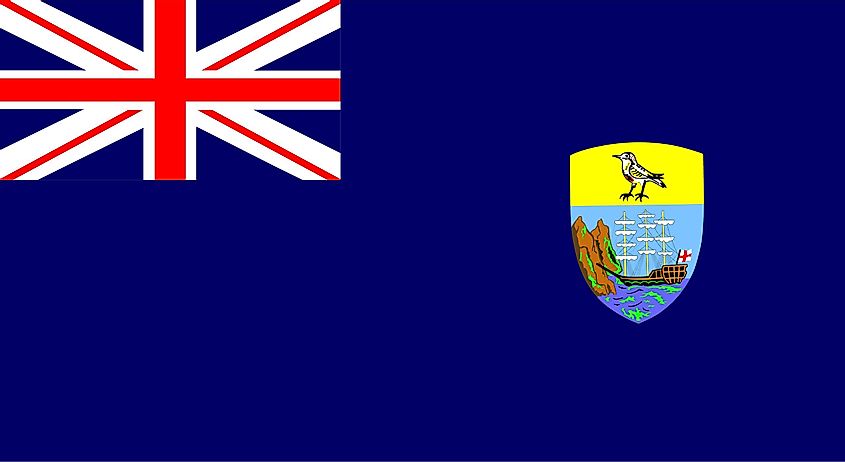
Saint Helena Island
Saint Helena is a remote tropical volcanic island that is located on the Mid-Atlantic Ridge in the South Atlantic Ocean. The island is geographically positioned about 1,950 km west of the southwestern coast of Africa and about 4,000 km to the east of the Brazilian city of Rio de Janeiro. Together with Ascension Island and Tristan da Cunha, Saint Helena Island forms a part of the British Overseas Territory of Saint Helena, Ascension and Tristan da Cunha. Ascension Island is located about 1,300 km northwest of Saint Helena Island, while the Tristan da Cunha archipelago is located about 2,100 km to the south of Saint Helena.
Geography

Saint Helena Island covers an area of about 121 km2 and measures approximately 17 km in length with a maximum width of 10 km. The island features rugged terrain and is mainly composed of volcanic rocks. The northern, eastern, and western parts of the island consist of many high perpendicular cliffs which exceed 700 m. Diana’s Peak, which rises to an elevation of 818 m, is the highest point on Saint Helena Island. In 1996, the mountain and its surrounding areas were designated as the island’s first national park. Numerous rocky islets are located off the island’s coast including Bird Island, Black Rock, Castle Rock, Speery Island, Lower Black Rock, Thompson’s Valley Island, Rough Rock Island, and Sandy Bay Island.
Located on the island’s northwestern coast is the city of Jamestown, which serves as the capital and a communication and transportation hub of Saint Helena. This historic settlement was founded by the East India Company in 1659.
Saint Helena Island experiences tropical climatic conditions with warm summers and slightly cooler winters. The island’s climate is moderated by the constant flow of South Atlantic trade winds and the Benguela Current. The climatic conditions, however, vary greatly across the island.
Wildlife

Some unique native flora and fauna that existed in isolation on Saint Helena for several years were destroyed after humans arrived on the island. Numerous endemic plants like the black cabbage trees, St. Helena redwood, and St. Helena ebony, and other plants like New Zealand flax, cedars, oak, eucalyptus, banana, and bamboo are still found here. Several animals like cats, cattle, goats, dogs, rabbits, and rats have been introduced on the island. The deep shoreline of the island houses numerous red crab species. Several endemic birds have also been recorded on the island. Locally known as the wirebird, the Saint Helena plover is an endemic bird that is found on Saint Helena Island. It is also recognized as the National Bird of Saint Helena.
Brief History

Saint Helena Island was discovered by the Portuguese navigator João da Nova on May 21, 1502. The island was named in the honor of Saint Helena of Constantinople. The island was uninhabited during the time of its discovery. No permanent settlement was established on the island by the Portuguese, but it served as an important stopover point for several ships that were sailing to Europe from Asia and Africa. The English East India Company occupied the island in 1659. The Dutch East India Company briefly took possession of the island in 1673, but the East India Company eventualy restored its ownership over the island.
In October 1815, Napoleon Bonaparte was exiled by the British government to Saint Helena. He stayed in the island’s Longwood House and died there on May 5, 1821. Under the 1833 India Act, the British Crown took over the control of Saint Helena from the East India Company, eventually turning Saint Helena into a Crown Colony. As per the British Nationality Act 1981, Saint Helena along with other Crown colonies was reclassified as British Dependent Territories. In 2002, the Dependent Territories were rechristened as Overseas Territories. Saint Helena is recognized as the United Kingdom’s second-oldest Overseas Territories after the Territory of Bermuda.











